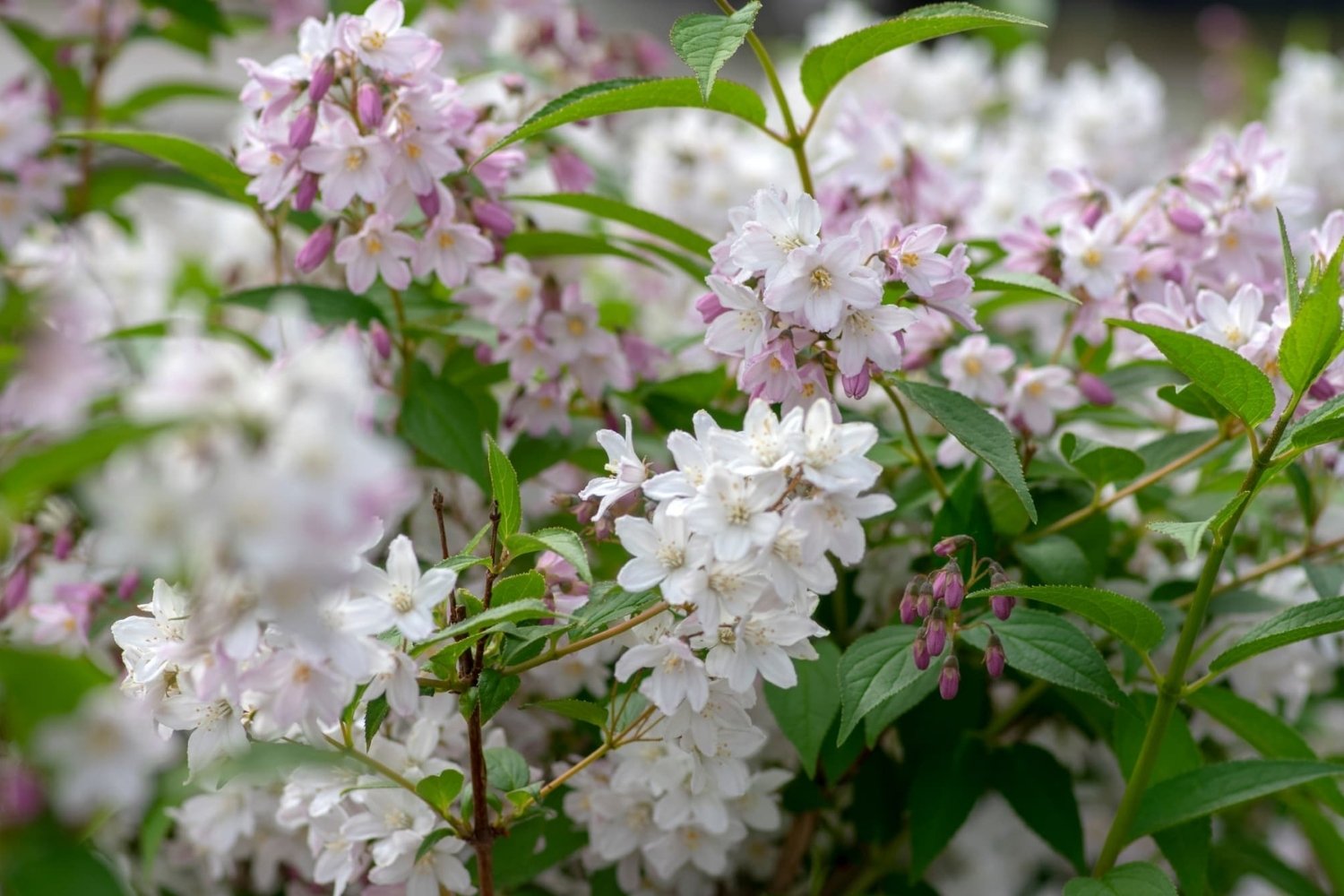
Deutzia is a fascinating genus of flowering plants that often goes unnoticed in many gardens. These deciduous shrubs, belonging to the hydrangea family, boast a variety of species known for their stunning blooms and hardy nature. Did you know Deutzia can thrive in both sun and partial shade? This makes them versatile additions to any landscape. With their star-shaped flowers, they add a touch of elegance to gardens during late spring and early summer. But what else makes Deutzia special? From their historical significance to their unique growing habits, there’s much to learn about these resilient plants. Whether you're a seasoned gardener or just starting, understanding Deutzia can help you make the most of your green space. Ready to dive into some intriguing facts about Deutzia? Let's get started!
What is Deutzia?
Deutzia is a genus of flowering shrubs known for their stunning blooms and hardy nature. These plants are popular in gardens and landscapes for their beauty and ease of care. Let's dive into some fascinating facts about Deutzia.
-
Deutzia belongs to the Hydrangeaceae family, which also includes hydrangeas.
-
Named after Johan van der Deutz, a Dutch patron of botany.
-
There are over 60 species of Deutzia, each with unique characteristics.
Characteristics of Deutzia
Understanding the traits of Deutzia can help gardeners choose the right species for their needs. Here are some key characteristics.
-
Deutzia shrubs can grow from 2 to 10 feet tall, depending on the species.
-
They have opposite leaves, which means the leaves grow in pairs on either side of the stem.
-
The leaves are usually simple and toothed, adding texture to the plant.
Blooming and Flowers
Deutzia is celebrated for its beautiful flowers, which can brighten any garden. Here are some interesting facts about their blooms.
-
Deutzia flowers typically bloom in late spring to early summer.
-
The flowers are usually white or pink, though some species have purple or lavender blooms.
-
Flowers grow in clusters, creating a stunning visual display.
-
Each flower has five petals, giving them a star-like appearance.
Growing Conditions
Knowing the ideal growing conditions for Deutzia can ensure healthy and vibrant plants. Here are some tips.
-
Deutzia prefers well-drained soil, which prevents root rot.
-
They thrive in full sun to partial shade, making them versatile for different garden spots.
-
These shrubs are hardy in USDA zones 5-8, meaning they can withstand a range of temperatures.
-
Deutzia is drought-tolerant once established, reducing the need for frequent watering.
Care and Maintenance
Proper care can keep Deutzia looking its best. Here are some maintenance tips.
-
Prune Deutzia after flowering to maintain shape and encourage new growth.
-
Mulching around the base helps retain moisture and suppress weeds.
-
Fertilize in early spring with a balanced fertilizer to promote healthy growth.
-
Deutzia is generally pest-resistant, though aphids and scale insects can occasionally be a problem.
Uses in Landscaping
Deutzia can be a versatile addition to any landscape. Here are some ways to use them.
-
They make excellent border plants, adding structure and color to garden edges.
-
Deutzia can be used as a hedge for privacy and wind protection.
-
Their compact size makes them suitable for container gardening.
-
They attract pollinators like bees and butterflies, supporting local ecosystems.
Interesting Facts
Here are some fun and lesser-known facts about Deutzia that might surprise you.
-
Some species of Deutzia have exfoliating bark, which adds winter interest.
-
Deutzia scabra, or fuzzy deutzia, has leaves covered in tiny hairs, giving them a rough texture.
-
The genus Deutzia was first described by Carl Peter Thunberg, a Swedish naturalist.
-
Deutzia gracilis, or slender deutzia, is one of the most popular species for gardens.
-
In Japan, Deutzia is known as "Utsugi," and it has been cultivated there for centuries.
-
Deutzia is often used in bonsai due to its small leaves and flowers.
-
Some species can tolerate urban pollution, making them ideal for city gardens.
-
Deutzia is deer-resistant, which is a bonus for gardeners in areas with high deer populations.
-
The flowers of Deutzia are often fragrant, adding an extra sensory element to gardens.
-
Deutzia can be propagated by cuttings, making it easy to share with friends and family.
The Final Petal
Deutzia is more than just a pretty face in your garden. This resilient shrub offers a burst of color and charm, making it a favorite among gardeners. With its ability to thrive in various conditions, Deutzia proves to be a versatile addition to any landscape. Its low maintenance needs and stunning blooms make it a practical choice for both novice and experienced gardeners.
Understanding the different species and their unique characteristics can help you choose the perfect Deutzia for your garden. Whether you're looking for a ground cover or a tall, flowering shrub, there's a Deutzia variety that fits the bill.
So, next time you're planning your garden, consider adding Deutzia to the mix. Its beauty, resilience, and ease of care make it a standout choice. Happy gardening!
Was this page helpful?
Our commitment to delivering trustworthy and engaging content is at the heart of what we do. Each fact on our site is contributed by real users like you, bringing a wealth of diverse insights and information. To ensure the highest standards of accuracy and reliability, our dedicated editors meticulously review each submission. This process guarantees that the facts we share are not only fascinating but also credible. Trust in our commitment to quality and authenticity as you explore and learn with us.
